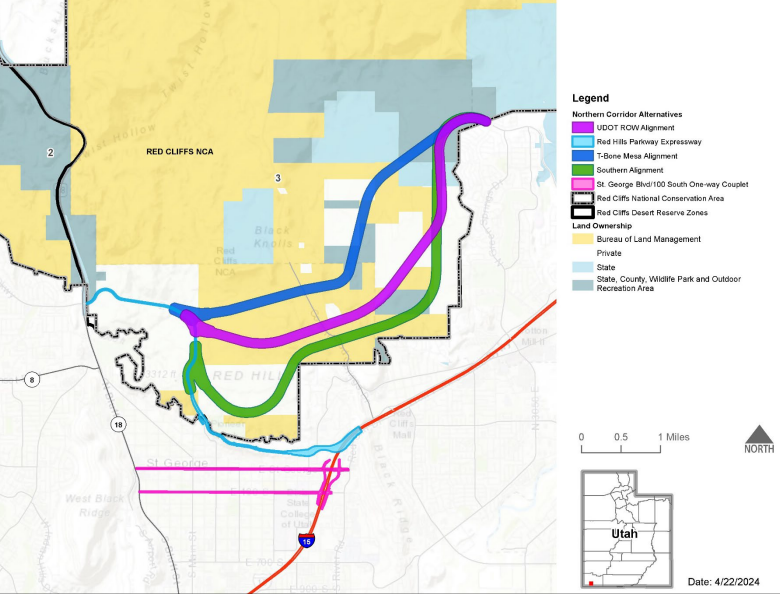New environmental study on Northern Corridor says contested highway could lead to more wildfires, invasive weeds

ST. GEORGE, Utah (ABC4) — Last week, the saga over the contested Northern Corridor highway project in St. George entered its latest chapter.
On May 9, the Bureau of Land Management released its draft Supplemental Environmental Impact Statement for the proposed four-lane highway through the Red Cliffs National Conservation Area.
The document, which adds to the original Environmental Impact Statement, notes that the proposed roadway could increase the spread of invasive weeds, lead to more damaging and frequent wildfires, and potentially harm the threatened Mojave desert tortoise.
Now, a public comment period is underway until June 24. Both those for and against the highway are urging Utahns to submit comments, as a final decision on the project could come later this year.
Background
For years, local officials have argued that the Northern Corridor is needed to alleviate traffic congestion in booming Washington County, one of the fastest-growing areas in the nation.
In 2021, during the waning days of the Trump administration, the BLM granted UDOT a right-of-way to the highway.
However, an alliance of Utah-based and other environmental groups sued, claiming that the highway would violate federal law and set a dangerous precedent for other conservation areas.
As part of a settlement reached last year, the right-of-way for the Northern Corridor was put on hold and the federal agencies were tasked with re-evaluating the original Environmental Impact Statement.
Reaction
Local officials in Washington County are fuming, as one of the alternatives listed in the draft document is terminating Utah’s right-of-way to the highway.
“The Northern Corridor is absolutely critical to our county. It must be built and it must be built the right way,” said Washington County Commissioner Adam Snow, in a statement released last week.
He and other county leaders say that the Biden administration has taken over the role of “traffic planner” in their community, ignoring the voices of locals who live in St. George.
Yet, Conserve Southwest Utah, one of the groups opposed to the project, says that many St. George residents don’t want the highway built, as it would ruin scenic vistas of the red desert landscape and degrade the experience for those who recreate on the land.
“There are alternatives that exist that are better in many cases, cheaper and don’t impact as many resources,” Holly Snow Canada, the group’s executive director, told ABC4. “Those are all options that are outside the national conservation area.”
What’s on the table
The draft Supplemental Environmental Impact Statement lists five alternatives to the original version of the Northern Corridor, which aimed to link areas of northwestern and northeastern St. George.
Two of the alternative routes would also have a 50-mph highway cutting through part of the Red Cliffs National Conservation Area. County officials have said that only one of these, dubbed the T-Bone Mesa Alignment, is viable.
Two of the other alternatives would change already existing roads in St. George to accommodate more traffic. The roads in question are Red Hills Parkway, St. George Boulevard, and 100 South.

Lisa Belenky, senior counsel at the Center for Biological Diversity, one of the opposed environmental groups, said that BLM shouldn’t be considering any new highway through the conservation area.
“We’re committed to keeping it whole and wild,” she said, in a statement.
Moe’s Valley, renowned climbing area, at risk amid review of St. George highway project
On the other side, Washington County Attorney Eric Clark said in a news release last week that the BLM’s newly released environmental study is promoting half-baked concepts that will end up harming Uthans’ quality of life.
“The Biden-led BLM`s approach on this important issue has been beyond frustrating,” he said.
The ongoing public comment period on the draft Supplemental Environmental Impact Statement is scheduled to last until June 24. The BLM will also host a public meeting on the topic, but the time and place have yet to be announced.
Copyright 2024 Nexstar Media, Inc. All rights reserved. This material may not be published, broadcast, rewritten, or redistributed.
For the latest news, weather, sports, and streaming video, head to ABC4 Utah.

